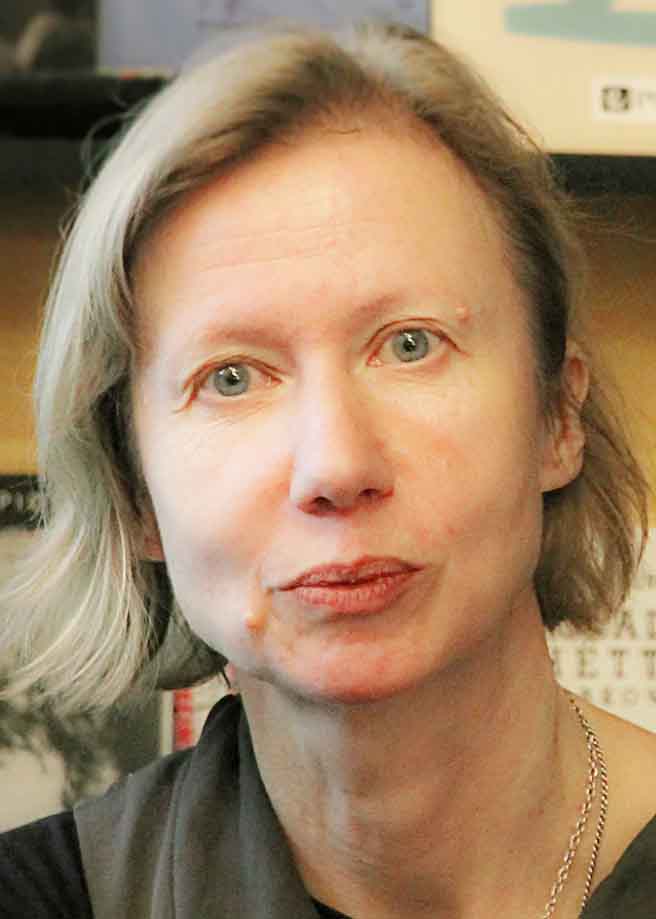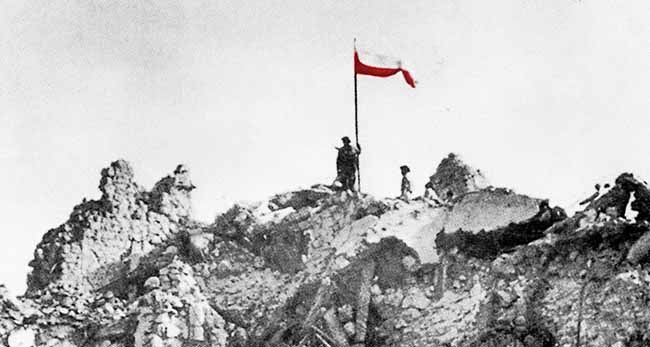Melchior Wańkowicz — a writer called the father of Polish reportage — is a figure with a biography as rich and full of twists and turns as the 20th century in which he lived. Thanks to his reportages, the Battle of Monte Cassino shaped the identity and imagination of Poles, and the diversity of his activities meant that he was always close to ordinary people. The story of his life is told in his study — the author's archive, on display at the Museum of Literature in Warsaw. It is worth visiting before the 50th anniversary of the writer's death.
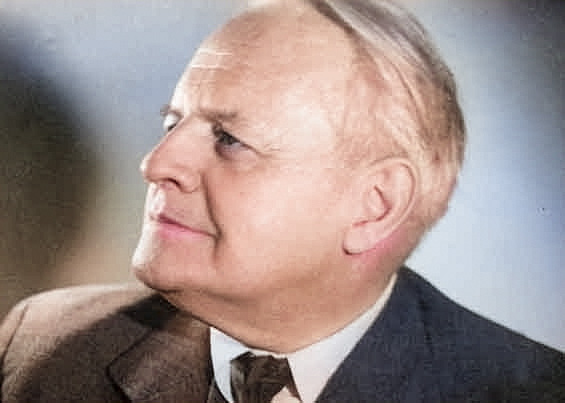
Melchior Wańkowicz, 1892-1974 (Source: Wikipedia, Color: A. Woźniewicz)
From the threshold, your attention is drawn to four portraits joined by a frame — an expression of the strength of the Wańkowicz family. Here you can see mother Zofia, called 'Rabbit' in Wańkowicz's writings, father Melchior — 'King' to those close to him — and their two daughters — the elder Krystyna — Krysia or 'Python' (because she asked lots of questions) [pytać is to ask questions in Polish - ed.] and the younger Marta — Tili. Both were immortalised in their teens. Krystyna was not given to them. A beautiful girl with long braids, a student of history at the secret University of Warsaw, a liaison officer and nurse in the Parasol Battalion, she died on the sixth day of the Warsaw Uprising. During the war, she stayed in Warsaw only with her mother. Her father dedicated the novel ‘Ziele na kraterze’ (Herbs on the Crater) to his late daughter and to the heroism of his wife, who searched for Krysia's body for several months.
Melchior Wańkowicz, unable to find his unit in the chaos of the defensive war of 1939, swam across the Dniester River with his typewriter and found himself on Romanian territory. He began a long emigration in several stages. His younger daughter joined him. It was not until 1958 that the writer finally returned to his country. His daughter Tili, who later became Marta Erdman, remained in the United States forever, and it was she who donated his memorabilia to the Museum of Literature shortly after her father's death in September 1974.
Beneath the quadruple portrait in the showcase are some of the most important material souvenirs of the writer. They lead to the field of the Battle of Monte Cassino, where Melchior Wańkowicz took part in May 1944 as a war correspondent for the Second Polish Corps commanded by General Władysław Anders. The writer joined the Polish army in Palestine, where, after spending almost a year in Cyprus, he was thrown by fate. He kept a chronicle of the corps and travelled with it from Iran to Iraq, Syria, Lebanon, Egypt and Italy.
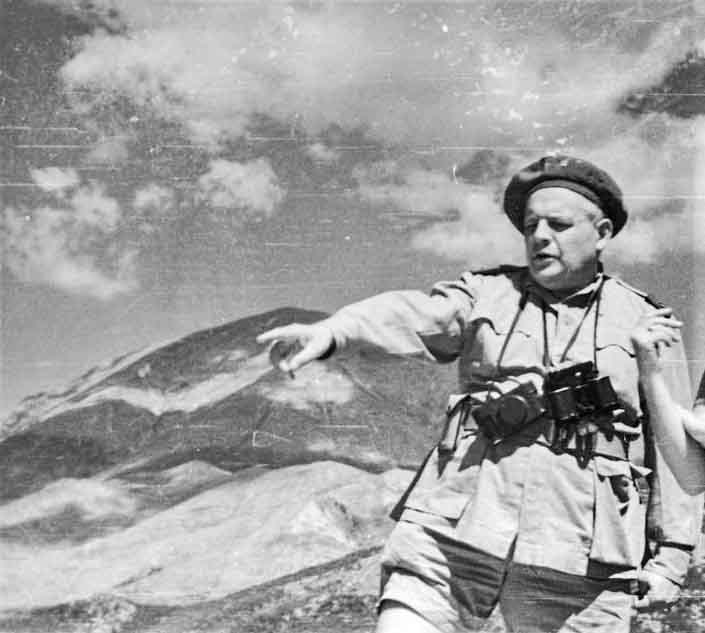
Melchior Wańkowicz at Monte Cassino (Source: Wikipedia)
The battle of Monte Cassino is forever linked with the figure of Wańkowicz. Participants in the battle recalled his energy and desire to write down everything to preserve the memory of the courage of the Polish soldiers. He was interested in their lives but also in the topography of the battlefield, the means of warfare used, and the strategic assumptions. He produced a monumental three-volume work, 'The Battle of Monte Cassino'. It was first published in Milan shortly after the war. The People's Republic of Poland forbade the publication of the book and it only appeared in a censored version in 1958, with a full edition appearing after the political breakthrough of 1989.
A display case in the writer's study contains, among other things, a cross made from melted shrapnel found on the hill of Monte Cassino. Opposite is a large hand-made map of the battle.
Wańkowicz left behind a wealth of works in various styles: narratives, memoirs, war and historical-geographical reports, columns and essays. His diligence is astonishing and his lightness of touch is delightful. He freely used Old Polish, dialects, created neologisms and was particularly close to the borderland language — his mother tongue.
He was born on 10 January 1892 in the province of Minsk, on the estate of Kaluzyce, which belonged to the Wańkowicz family from the 18th century until the October Revolution. Melchior made his debut during the partition of Poland, but his talent really came to the fore between the wars. He drew his subjects from the past, from observations of his time and journeys near and far. He studied law. As a journalist he travelled to Mexico, which he wrote about in his book 'In the Churches of Mexico'. He wrote and collected books, but he also published. On his own initiative, he founded Towarzystwo Wydawnicze Rój, which in the 1920s and 1930s introduced works by Bruno Schulz, Witold Gombrowicz, Tadeusz Dołęga Mostowicz and foreign authors such as Thomas Mann, Marcel Proust and Aldous Huxley to the Polish market.
Wańkowicz was also active in big business. He became an advertising consultant for the Confectioners' Association, for which he invented the immortal slogan: 'Sugar makes you stronger'. Many years later, he created an equally catchy and still vivid slogan for Polish Airlines: 'LOT-em bliżej'.
Above all, he was always working on more books. After the Second World War, as an émigré, he looked at his compatriots without a homeland. At that time, he wrote 'The Life of the Polish Community' and 'Poles and America'. He was granted American citizenship, which made it easy for him to travel the world in the early years of communist Poland. From a young age, he had the vein of a conspirator and freedom fighter. At the age of seventeen, he founded the clandestine magazine ‘Wici’. During the communist years, he courageously spoke out, and to be truly close to his people, he renounced his American citizenship, which eventually landed him in the dock. He was sentenced to three years in prison, but only spent a few weeks in jail. He was over seventy years old then and still had the strength to work and meet his readers, who loved him very much.
The centrepiece of Wańkowicz's study is a massive desk from Gdansk. On it, the writer kept gadgets imported from America to organise and facilitate his work; rulers, pencil sharpeners, calendars, business card holders, paper cutters and other trinkets were not available in such a modern form in Poland. Evidence of Wańkowicz's extensive correspondence is provided by a letter scale. On his desk stands a substantial American piece of furniture — an armchair on wheels.
But the heart of the study is books — four and a half thousand titles in Polish, English and Russian. Fiction and non-fiction by Polish and foreign authors, past and present, dictionaries, and encyclopaedias. All the things he picked up to broaden his knowledge and enjoy the beauty of words.
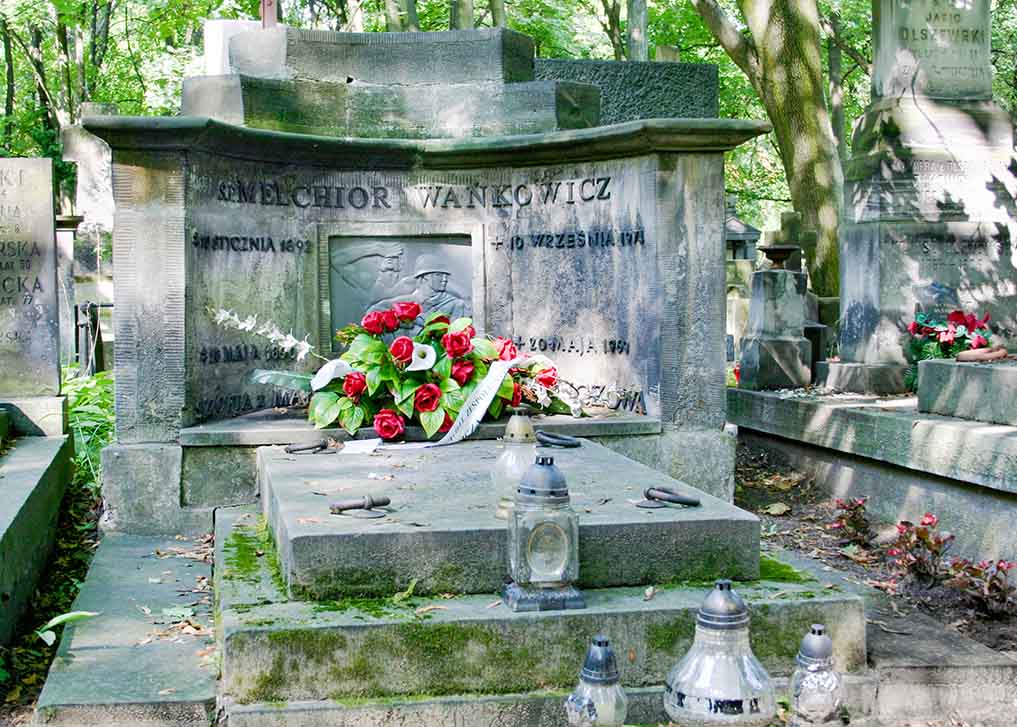
The grave of Melchior Wańkowicz at the Powązki Cemetery in Warsaw (Source: Wikipedia)
Melchior Wańkowicz died in Warsaw on 10 September 1974. His study tells the story of him, his family, his experiences, and his passions. We are confronted with objects full of his energy. The headgear, so characteristic of Wańkowicz, hung on a hanger, is touching. Hat and beret — traces of everyday life.
He was close to ordinary people, able to empathise with their feelings because he had been through a lot himself. In his last work, 'La Fontaine's Decanter, he concluded: 'In my writing, I feel sprier, after having rubbed shoulders with life as a Master of Laws and trainee judge, a graduate of the School of Political Science, a soldier, an advertising man, a clerk, a publisher, a builder and leaseholder of advertising hoardings, a director of a state enterprise, a manager of a tobacco wholesaler, a high school teacher, and a worker on a chicken farm.' It was to this last occupation that he devoted himself in America. He had to earn extra money by washing and packing eggs.



